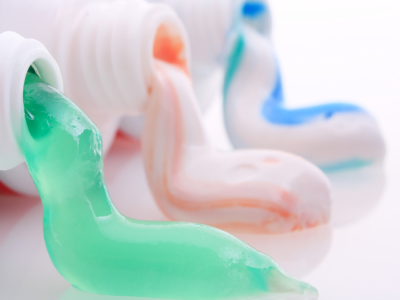There are many types of toothpastes on the market designed to fit individual needs:
 Whitening Toothpaste — Teeth whitening toothpastes don’t actually whiten teeth; they use scrubbing materials or chemicals to remove tooth stains.
Whitening Toothpaste — Teeth whitening toothpastes don’t actually whiten teeth; they use scrubbing materials or chemicals to remove tooth stains.
Tartar Control Toothpaste — Likewise, tartar control toothpastes don’t remove dental tartar but they do help prevent dental tartar from accumulating. Dental tartar can only be removed by a dentist, so it’s beneficial to start using tartar-control toothpaste after a dental checkup.
Desensitizing Toothpaste — Tooth sensitivity often results from weakened enamel or the exposure of roots due to receding gums. Desensitizing toothpastes work by creating a barrier and blocking irritants from reaching the nerves.
Fluoride Toothpaste — Fluoride is important to your dental health and can be added to any type of toothpaste. Not only does fluoride strengthen teeth against dental cavities but it remineralizes teeth worn by acid and fights sensitivity. Fluoride toothpaste is an excellent choice for those who need a little extra help protecting themselves from cavities — especially children and seniors. Fluoride toothpastes are also recommended for those without the benefit of community water fluoridation.
Fresh Breath Toothpaste — Like many mouthwashes, fresh breath toothpastes are designed to mask bad breath but do not actually treat halitosis (foul smell).
Natural Toothpaste — For those who are uncomfortable brushing with chemicals, natural toothpastes may be an option. These contain all-natural ingredients but have varied results. Some natural toothpastes may not contain fluoride, so you should check the label before buying the product.
Children’s Toothpaste — These toothpastes have been developed to meet the special needs of children. As children are extremely susceptible to dental cavities, their toothpastes often contain fluoride. Younger children should only use a small amount of toothpaste to avoid ingestion and prevent dental fluorosis and should be always supervised during brushing.
Gels — Some gels contain mouthwash which may be why some prefer the consistency or taste of a gel over a toothpaste. While gels may make your mouth feel fresher, there’s no proof that they clean teeth better than toothpastes. Also, many gels do not contain fluoride.
Tooth Powders — Dry powders are also available to clean your teeth but they are often more abrasive than toothpaste.
Equally as important as the type of toothpaste you use is the way you use it. Adults usually only need a pea-sized amount (unlike as they show a full length of the bristles in the TV commercials) to get the therapeutic effects toothpaste has to offer. How you brush also affects your oral health.
With so many types and brands of toothpastes, how do you choose which one is right for you? Best way is to speak with your dentist, who after a thorough examination can help you determine your toothpaste needs. For example, If you’re cavity-prone, your dentist may recommend a fluoride toothpaste .
Although toothpaste is a significant contribution to your oral hygiene routine, it’s just one part of your oral health care regimen. Brushing must be combined with other aspects of dental care including flossing and a good diet. Regular dental visits are also needed to check for dental problems.
